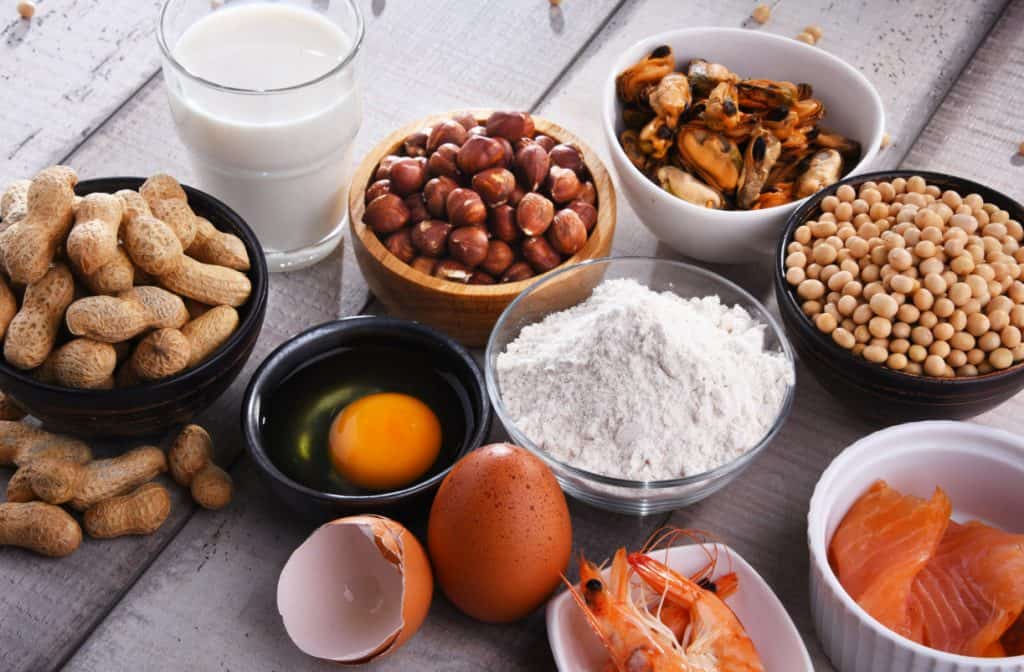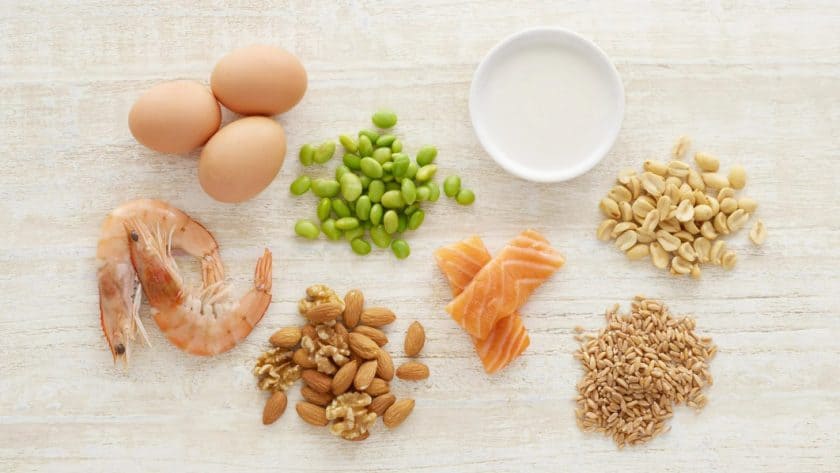Cooking at home provides the opportunity to manage ingredients closely, but it also comes with the responsibility of ensuring that you avoid food allergens and address them properly. Food allergies can provoke reactions that range from mild discomfort to severe medical emergencies, making it crucial to understand their potential effects and how to handle them safely.
Allergic reactions can manifest in various ways, and symptoms often differ from person to person. Common indicators include skin issues such as hives, redness, or itching, as well as respiratory symptoms like sneezing, nasal congestion, or wheezing.
Some individuals may also experience gastrointestinal symptoms, including nausea, vomiting, or abdominal cramping. In more serious cases, a reaction could lead to anaphylaxis—a condition characterised by difficulty breathing, throat swelling, a rapid or weak pulse, and a sudden drop in blood pressure. Anaphylaxis is life-threatening and requires immediate medical intervention.
Reactions can occur quickly after consuming or coming into contact with an allergen, but they may also develop over several hours. For those with severe allergies, even trace amounts of a problematic ingredient can provoke a strong response. It is vital to take every precaution when cooking, especially if you’re preparing meals for someone with known food allergies.
Staying informed about potential triggers, reading ingredient labels thoroughly, and maintaining clear communication with anyone affected by food allergies are effective strategies to avoid food allergens and prevent reactions. With proper attention to detail and a commitment to safety, you can significantly reduce the risks associated with food allergens while cooking.

Understanding Food Allergies
Food allergies occur when the immune system reacts to specific proteins in certain foods, treating them as if they were harmful invaders. This reaction triggers the release of chemicals in the body, resulting in symptoms that can vary significantly among individuals.
These symptoms may include itching, swelling, hives, digestive discomfort, respiratory issues, or, in severe cases, anaphylaxis.
The severity of a reaction often depends on the individual’s sensitivity and the amount of the allergen consumed. Even a tiny amount of exposure can cause significant symptoms in highly sensitive individuals. For this reason, managing food allergies requires a thorough understanding of how allergens are introduced into the body and how to prevent them.
Awareness is essential in shared spaces, such as kitchens, where accidental cross-contact between allergenic and non-allergenic foods is common. In many cases, cross-contact happens unintentionally, such as when using the same cutting board, knife, or cooking utensil for multiple ingredients without proper cleaning in between.
For individuals with food allergies, the unpredictability of reactions adds to the complexity of maintaining safety. An allergen may not always be visible, and many processed foods can contain hidden ingredients that may not be immediately obvious.
This is why reading labels and understanding ingredient lists is critical, especially when working with pre-packaged items or foods sourced from outside the home, as it helps you identify and avoid food allergens.
Educating yourself about food allergies helps build a safer cooking environment for everyone. This knowledge not only reduces risks but also shows care and attentiveness to the needs of those with allergies. Knowing the specific foods that can cause reactions, how these reactions manifest, and how to prevent exposure is essential for making informed decisions while preparing meals.
Identifying Common Allergens
Food allergens are substances that can trigger allergic reactions in sensitive individuals, and understanding which foods are most commonly associated with allergies is a critical step in creating a safer cooking environment.
Among the most frequently identified allergens are peanuts, tree nuts (such as almonds, walnuts, and cashews), milk, eggs, wheat, soy, fish, and shellfish. These eight foods are responsible for the majority of allergic reactions and are often referred to as the “major allergens.”
When shopping for ingredients, it’s important to scrutinise product labels carefully. Federal regulations require food manufacturers to clearly disclose the presence of major allergens on packaging, either within the ingredient list or in a separate “contains” statement.
This labelling requirement helps consumers quickly identify products that may pose a risk. However, cross-contact warnings, such as “may contain” or “processed in a facility that handles,” are not standardised, so additional caution is needed.
Hidden allergens can also be a concern, as some foods may include allergenic ingredients that are not immediately obvious. For instance, certain sauces, dressings, or processed foods might use soy, wheat, or dairy as stabilisers or flavour enhancers.
When in doubt, reaching out to the manufacturer for clarification on ingredients is always a good practice. Additionally, recognising alternative names for common allergens is helpful. For example, casein and whey are milk proteins that may appear in ingredient lists without being explicitly labelled as milk.
Dining out or using pre-prepared items requires even more vigilance. Some cuisines are more likely to incorporate specific allergens, such as peanuts in Asian dishes or wheat in baked goods. Therefore, understanding potential risks associated with specific food categories can guide safer choices.
Maintaining awareness and consistently verifying ingredients ensures that meals can be enjoyed without compromising the safety of those with food allergies.
Safe Cooking Practices
Minimising cross-contact is essential to ensure the safety of individuals with food allergies. Begin by designating specific areas in the kitchen for preparing allergen-free meals. Use colour-coded tools and equipment, such as cutting boards and knives, to distinguish allergen-free items from those used for other foods. These visual cues can help prevent cooking mistakes.
Store allergenic ingredients separately from non-allergenic ones to minimise the risk of accidental exposure. Seal containers tightly and clearly label items to avoid confusion. Pay special attention to shared pantry staples, such as flour or sugar, as these can easily become contaminated if scoops or measuring cups are reused for different ingredients.
When preparing meals, clean countertops, stovetops, and other work surfaces thoroughly before and after cooking. Wipe down small appliances, such as blenders and mixers, as food particles can linger in crevices. Dishwashers can be helpful for sanitising kitchen tools, but if handwashing is necessary, ensure utensils are scrubbed with hot, soapy water and rinsed thoroughly.
For shared meals, consider serving allergen-free dishes separately to avoid accidental contamination. Use serving spoons or tongs designated for allergen-free options to maintain their safety. Educating other household members about these practices can also reduce risks, especially in busy kitchens with multiple cooks.
Avoid using shared cloth towels for drying hands or wiping surfaces, as they may transfer allergens. Instead, opt for disposable towels or dedicate separate cloths specifically for allergen-free cooking tasks. When handling ingredients, wash your hands frequently, particularly after touching allergenic foods or packaging.
When cooking for someone with a severe allergy, avoid using high-risk techniques like frying in shared oil, as particles can easily transfer. Similarly, be mindful of airborne particles from processes such as sifting flour, which can disperse allergens through the air. Practising these steps consistently will ensure that cooking environments remain as safe as possible for those with food allergies.
Substituting Ingredients
Finding ingredient substitutes is a practical way to avoid food allergens while still maintaining the integrity of recipes. When replacing common allergenic ingredients, it’s crucial to choose alternatives that serve a similar function in the dish.
For instance, plant-based milk options like oat, soy, or rice milk can replace cow’s milk in most recipes, while dairy-free margarine or coconut oil work well as substitutes for butter.
When baking, eggs can often be swapped with flaxseed or chia seed mixtures, which mimic the binding properties of eggs, or with store-bought egg replacers designed for allergy-friendly cooking.
For those who avoid food allergens like wheat, gluten-free flours, such as rice, almond, or chickpea flour, provide adequate substitutes, though the texture and density of baked goods may require adjustments. Gluten-free flour blends are often pre-formulated to replicate the consistency of traditional wheat flour, simplifying the substitution process.
Suppose a dish calls for soy sauce, coconut aminos or tamari (a gluten-free soy sauce alternative). In that case, they are excellent replacements that add a similar savoury flavour without introducing soy or wheat.
Nut allergies may require changes in both flavour and texture. For recipes that call for nuts, sunflower seeds or pumpkin seeds can often be used as a replacement, and sunflower seed butter provides an alternative to peanut or almond butter. Be mindful of cross-contact risks with seed-based products, as some are processed in facilities that also handle nuts.
It’s also helpful to explore alternative thickeners when avoiding allergens like wheat or dairy. Cornstarch, arrowroot powder, or tapioca starch can replace flour-based thickeners in soups and sauces, while pureed vegetables such as cauliflower or potatoes offer creamy textures without dairy.
Experimentation is often key when working with substitutes. Some ingredients may require adjustments to liquid ratios or cooking times, and taste-testing during preparation can help achieve the desired outcome. Rely on trusted recipes or guides that have been tested for allergen-free adaptations to simplify the process.

Planning Meals
When planning meals for individuals with food allergies, focus on simplicity and transparency in ingredient selection. Start by identifying allergen-free ingredients that can serve as the foundation for meals, such as fresh fruits, vegetables, proteins, and grains.
These items are less likely to contain hidden allergens and provide a wide variety of options for balanced nutrition. Build meals around versatile, whole foods that can be easily customised to accommodate dietary restrictions and help you avoid food allergens.
Carefully organise recipes to ensure all ingredients are safe for everyone at the table. If you’re adapting a favourite recipe, replace allergenic ingredients with suitable alternatives that match the dish’s flavour or function.
Maintain a list of go-to meals and recipes that are both allergen-free and enjoyed by everyone in your household. This can save time and reduce stress during busy weeks.
Meal prepping in advance can also reduce the risk of accidental exposure, especially when cooking for multiple dietary needs. Store pre-prepared allergen-free items in clearly labelled containers to avoid mix-ups when creating a shopping list, group items by allergen-free categories to streamline the grocery process and minimise the risk of purchasing unsafe products.
For variety, explore cuisines or recipes that naturally align with allergen-free cooking. For example, Mediterranean or Latin-inspired dishes often feature fresh produce and proteins, offering a variety of options without relying heavily on common allergens.
However, always review ingredient details carefully, as regional ingredients can occasionally include unexpected allergens.Establishing a consistent meal planning routine fosters an environment where allergen safety becomes second nature.
Share your meal plans with all household members, particularly if more than one person is preparing meals, to maintain continuity and safety practices.
Additionally, keep emergency contacts or medical plans readily available as an added layer of preparedness when serving meals to individuals with severe allergies, ensuring consistent efforts to avoid food allergens.
